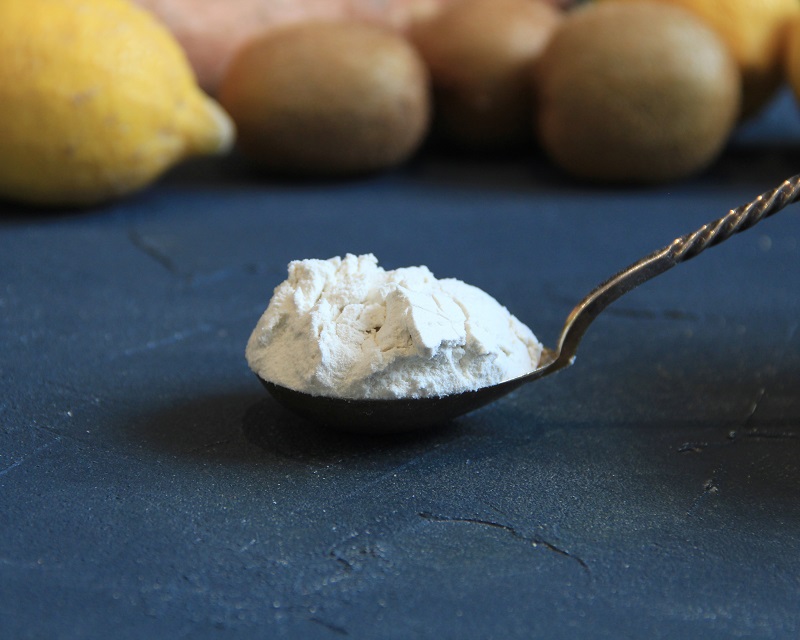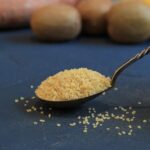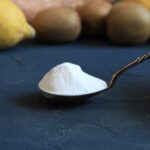Organic Guar gum
From 1.60€


Guar gum is derived from the seeds of the guar plant Cyamopsis tetragonoloba, native to India and Pakistan. Lithuanian name Kampuotoji pupene.
Guar gum is similar in properties to locust bean gum (made from the powdered seeds of the locust bean), also known as carob gum. Like guar gum, this powder is made from the endosperm of the seed of a legume plant. However, there are differences between the two types. While guar gum dissolves quickly in water at room temperature, and for carob resin, water needs to be heated to around 85 °C to dissolve well.
To avoid confusion, the much-loved ‘chocolate’ Carob powder is made from the carob pods, and caron resin is made from the seeds of the carob.
Guar gum is a natural thickening and stabilising agent (E412) widely used in the food, pharmaceutical and cosmetic industries.
In addition to its culinary uses, guar gum has attracted attention for its potential health benefits.
Attention
Although organic guar gum is safe for most people, excessive use can cause side effects such as bloating, gas and abdominal discomfort.
It is very important to use guar gum sparingly and to take into account individual needs.
Use of
Guar gum improves the texture and volume of baked goods such as breads, cakes and pastries, leading to improved quality and longer shelf life.
Guar resin is commonly used in plant-based dairy and yoghurt products to give a creamy consistency and prevent the separation of ingredients.
Guar gum is an excellent thickener for sauces, gravies and dressings, creating a smooth and consistent texture.
Used in desserts and ice cream.
Guar gum can be used as a substitute for gelatine, which is neutral in taste and smell.
Recommended use
For hot food (sauces, stews, puddings) – use 1-3 teaspoons of powder per 1 litre of liquid.
For cold foods (salad dressings, ice cream, puddings) – use 1-2 teaspoons of powder per 1 litre of liquid.
For internal use, guar gum is safe for most people, but it is recommended to be used for no more than two years.
Pregnant women. Guar gum can be safe for up to 4 weeks.
For breastfeeding. There is not enough reliable information to know whether guar gum is safe to use when breastfeeding.
For children. Guar gum is safe for children aged 4 years and older.
Sources:
https://www.healthline.com
https://www.ncbi.nlm.nih.gov
https://www.webmd.com
NOTE. The information contained herein should not be construed as a recommendation for treatment or other health issues.
We encourage you to make personal decisions about your personal health, taking into account a wide range of sources of information.
Organic guar gum 100%
Energy: 778 kJ / 186 kcal
Protein: 5.0 g
Fat: 1.0 g
- of which saturates: 0,3 g
Carbohydrates: 1,0 g
- of which sugar: 1,0 g
Fiber: 82.0 g
Salt: 0,55 g
Store in a cool, dry place.



